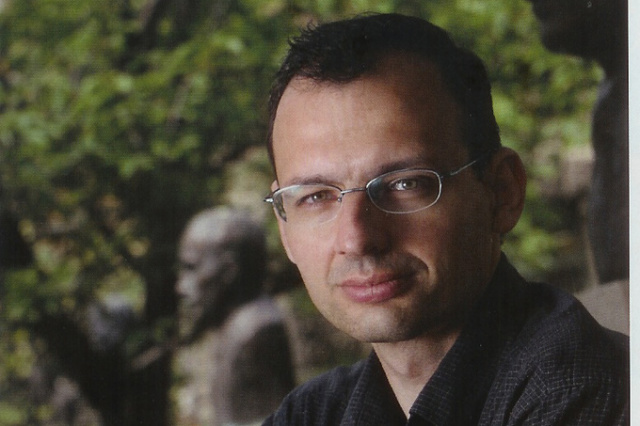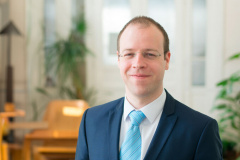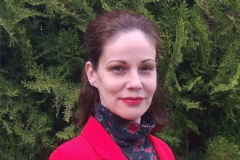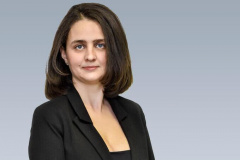Featured Lendület Member: Ádám Gali
Quantum technology has the potential to revolutionise many branches of electronics, from communication to sensors to computing. Ádám Gali, professor, advisor to the Institute of Solid State Physics and Optics at the Wigner Research Centre for Physics, and head of the Lendület-funded Semiconductor Nanostructures Research Group, has been researching quantum bits in solids for some time. Since last year, he has continued his research as a winner of the now-advanced Lendület grant. Based on his results, he and his fellow researchers can lay the foundations for new types of quantum sensors.
Ádám Gali has been awarded a grant under the advanced Lendület call and will continue his long-standing quantum technology research, which has already yielded significant results, with the help of the Programme. Their lab was the first in Hungary to measure the behaviour of a solid-state quantum bit. According to his own assessment,
the most important results so far have been the discovery and characterisation of point defects or molecule-like formations in solids that are capable of functioning as quantum bits.
 Ádám Gali Photo: dap.fat.bme.hu
Ádám Gali Photo: dap.fat.bme.hu“The quantum bit is the smallest building block of a quantum computer, but they can be used not only in quantum computing, but also in quantum communication, for example,” says Gali. “In quantum communication we cannot use classical amplifiers. Instead, the transmitted signals are passed on to each other from time to time using “quantum repeaters”, making use of their entangled states.”
From mathematical concept to physical reality
Quantum bits are similar to conventional bits in the sense that we can build entire quantum informatics around them. Initially, quantum bits existed only in theory (as a mathematical concept), but in order to make a real computer out of them, they need to be physically realised. A quantum bit can exist not only in two states, but also in all linear combinations of these states. If we try to imagine this in space, then
the vector characterising the state of the quantum bit can not only stand or exist in one line in two opposite directions, but can also rotate in all directions of space, describing a spherical surface.
In other words, the state of a quantum bit can cover a much larger space than that of conventional bits, so computers built from quantum bits can approach problems that classical computers cannot handle. Some mathematical problems become polynomially complicated as they become more complex. These can be solved with conventional computers, but we need to build an even bigger supercomputer. At the same time, there are also mathematical problems that are exponentially complicated for which the computational power and time required increases exponentially. These can no longer be handled by classical computers above a certain level, and require a quantum computer.
Atomic scales
The third major area of quantum technology, quantum sensing (the development of quantum sensors), is most closely linked to Gali’s research. Solid-state quantum bits have both advantages and disadvantages compared to the superconductor-based quantum bits that make up the majority of current quantum computers. They have the advantage that they are easier to work with in some cases and can even operate at room temperature (whereas superconducting quantum bits need to be cooled to very low temperatures). The disadvantage of solid-state quantum bits is that they are very sensitive to environmental changes. Even a minimal magnetic or electric field, or even mechanical pressure, can affect their behaviour.
This sensitivity is a problem with a quantum computer, but it is exactly what is needed with a quantum sensor:
These quantum bits can be used to build incredibly accurate (literally atomic-scale) and reliable sensors and can be used for measurement.
“Quantum sensors effectively exploit the otherwise problematic sensitivity of quantum bits to create sensors that would otherwise be impossible to implement,” continues Gali. “Our research will allow us to miniaturise quantum sensors, making them much more useful in space technology (where weight and size are very important). We are also not losing sight of quantum computers, which would benefit in many ways from using solid-state quantum bits rather than superconducting circuits. We believe that the latter solution would theoretically be more scalable, that is, it would be much easier to build computers that are orders of magnitude more complex than today’s computers that contain a few bits, even with millions of quantum bits.”
Despite this, Gali expects that the results of their Lendület research will be used in the development of quantum signal repeaters and quantum sensors, and may even lay the foundations for new types of quantum sensors. The current Lendület grant will support the theoretical research of the team. The physicist will now be able to carry out methodological research that will take longer but will be of great importance in improving the accuracy of theoretical spectroscopies that study optical and magnetic properties together. Based on these results, they will later carry out experiments within their own research group or in collaboration with foreign groups.
“In some areas, our research is so advanced that we have already physically implemented the theories and are working with companies to create a commercial product,” says Gali.
“The quantum sensor microscopes we are developing will not only be used by physicists, but will also be used as highly sophisticated industrial instruments (just as, for example, electron microscopes are used in quality control in automotive manufacturing).”






